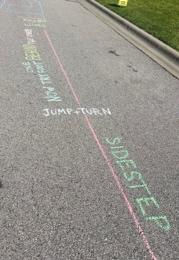Exercises to Promote Good Posture and Body Mechanics
- All Care Therapies

- Mar 16, 2022
- 3 min read
What position do you hold your body in for most of the day? You can be sitting at a desk working away, slouching over your laptop studying, or walking around with your head looming down on your phone for hours. Our bodies are great at adapting to the positions and stresses we put them in. Unfortunately, when we combine repetitive movements, poor posture, and over-use of our technological devices, injuries to the muscles, nerves, and tendons are at an increased risk for injuries. A study on ergonomics reported 90% of university students adopting a forward head posture with rounded shoulders and improper movement through their wrists due to prolonged periods of time on their mobile devices. If you’re in a position for hours at a time, your body will adapt to it and eventually experience “wear and tear” that could result in future pain from the improper movement patterns due to the muscle imbalances you’ve created.
Benefits to having good movement patterns:
Improves functions of other bodily functions (heart health/breathing efficiency/digestive health)
Reduces risk for injury and chronic pain from repetitive motions of daily activities and sports
Improve movement efficiency with less energy expenditure.
With that being said, let’s get moving! We believe that MOTION IS LOTION to the joints, muscles and bones. These 4 exercises and alternatives will help promote good posture and allow you to initiate healthy movement patterns:

Wall Angels
Stand with your back against a wall and your feet a foot or so away from the wall. Press your entire back against the wall, so that your back is not arching away from the wall. Place the back of your head against the wall without tilting your head back. Your head should be level and the back of your neck should be long.
Press your arms into the wall in the shape of a goalpost. Keep your shoulders, elbows and hands against the wall as you move your arms up and down as far as you can.

ALTERNATIVE: If you aren’t able to reach your arms back into this position -
Feet comfortable distance at or from wall. Hips and chest against wall. Raise arms from starting position to V and return.3

Chin Tucks
While sitting with upright posture, place hand as pictured so that your thumb is on your upper chest and your index finger is on your chin. Now pull your head straight back so that your chin moves away from your index finger. Make sure to avoid tilting your head up/down during the movement.

ALTERNATIVE: If unable to perform motion in sitting -
While lying on your back, tuck your chin towards your chest and press the back of your head into the table.
Maintain contact of the back of your head with the surface you are lying on the entire time.3

Pelvic Tilts
Lie on your back with your knees bent. Next, arch your low back and then flatten it repeatedly. Your pelvis should tilt forward and back during the movement. Move through a comfortable range of motion.

ALTERNATIVE (CAT/COWS):
Start in a crawl position with your shoulders over your hands and your hips over your knees. Next, arch your low back and then flatten it r repeatedly. Your pelvis should tilt forward and back during the movement. Move through a comfortable range of motion.3

Prone Press Up
Start from laying on your stomach and palms as showed in the picture.
Gently, push yourself up and maintain your hips firmly on the table.

ALTERNATIVE: If unable to push up -
Lying face down, slowly press up and prop yourself up on your elbows. Hold, lower back down and repeat.3
References
1. Yamak, B., İmamoğlu, O., İslamoğlu, İ., & Çebi, M. (2018). The effects of exercise on body posture. Turkish Studies Social Sciences, 13(18), 1377-1388. https://doi.org/10.7827/TurkishStudies.13911
2. Gold JE, Driban JB, Thomas N, Chakravarty T, Channell V, Komaroff E. Postures, typing strategies, and gender differences in mobile device usage: an observational study. Appl Ergon. 2012;43(2):408-412. doi:10.1016/j.apergo.2011.06.015
3. Images/descriptions adapted from: https://www.hep2go.com/index_b.php?userRef=gciaake




Comments